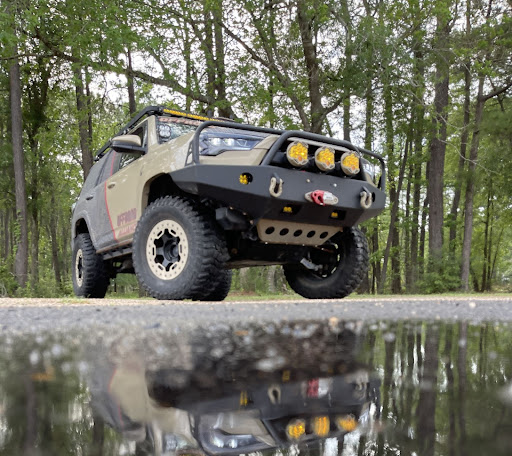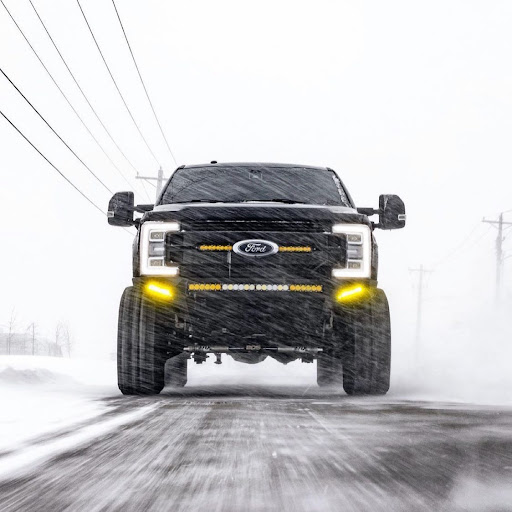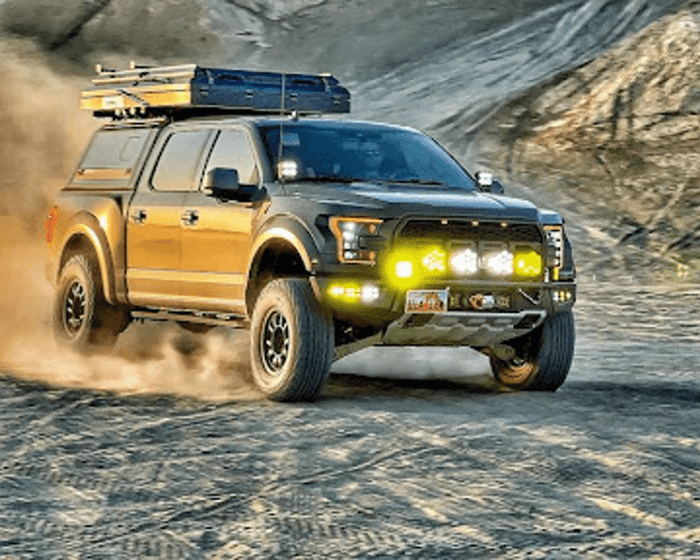
Off-Road Driving in the Rain? 5 Tips To Keep You Safe
Off-roading is an all-weather affair, and when it starts to rain, your off-road truck or SUV needs to be ready to handle the terrain to get you home safe. Off-roading already gives you the chance to push your skills as a driver to the limit, along with your vehicle’s ability to manage obstacles that you find on the trail. When you add more water to the mix in the form of rainfall, you have a recipe for both disaster and a more rewarding off-road experience. Let’s take a look at how rain can change the equation when you’re driving off the road, how to prepare your vehicle to manage it, and what you can do to safely navigate your way back home.
Into Each Life, A Little Rain Must Fall.
If you’re worried about a little water, off-roading isn’t for you. When it’s more than a little water, however, experienced off-roaders pay attention because they know dry and wet driving aren’t the same. Make sure that, as you build and gain experience with your vehicle, you’re still making good decisions about your skill level and the customized vehicle you have to work with. Plenty of off-roaders have found themselves calling a buddy for recovery after a surprise rainstorm and lack of experience left them stranded. Prepare for success, but plan your escape route if the rain or terrain takes a nastier turn than either of you are up to.
Building A Beast For Off-Roading In The Rain
We’re not talking about customizing your vehicle for extremely wet conditions. Instead, we’ll take a look at modifications to your off-road truck or SUV that will prepare you for safer (and more fun) driving when the rain moves in and you aren’t ready to head out. This not only adds flexibility to your off-roading but gives you a few more tools to push your normal excursions further than ever.

Check Your Tires
This isn’t a just-for-rain tip. As part of your regular off-road vehicle maintenance, you should be checking your tires regularly. Make sure you have good tread that is going to give you good purchase in a variety of off-road conditions. You also need to make sure your spares are properly inflated. Changing a tire in the rain isn’t fun, but it’s way better than trying to fix a flat in a downpour because you weren’t prepared. As conditions become wetter, it may be necessary to air down your tires further to soften the sidewall and get more rubber in contact with the ground for better traction.
The correct tire pressure for off-roading changes with trail conditions, so be mindful of the situation around you as it unfolds. The sloppier the trail, the lower the pressure that may be needed, but that puts you at increased risk of the tire bead unseating from the wheel. Specially designed tires, like those with a Beadlock or ICON Alloy’s Rebound wheels, which have bead retention pegs.
Get Good Wipers
Just like you invest in good rubber for your tires, you can’t afford to get cheap on your wiper blades. You need to be able to see the trail and obstacles in front of you, but off the road, the view behind you can be just as important. If your vehicle doesn’t give you a clear view for navigation when the rain starts to fall, get the wipers, motors, and mods that open up your lines of sight.
Keep Your Brake Pads And Rotors Ready
Off-road brake components are designed to perform under harsh operating conditions, but only if you keep them up. Don’t wait for the grind and squeal before changing brake pads or rotors. You also need to understand that brake performance changes as you off-road through the mud and rain, covering components in water, mud, and dust. The old adage is that four-wheel drive isn’t the same as four-wheel stop, so pay attention to how your vehicle’s response to the brake pedal changes, the way it affects your stopping distance on different terrains, and the behavior and location of terrain features and other off-roaders around you.

Light It Up
Headlights are an important safety feature on your vehicle. That’s why for decades now, most vehicles have been equipped from the factory with automatic lights that turn on as the surrounding light dims. This is a great feature, but it may not be enough for off-roading in the rain. If it’s raining enough for windshield wipers, turn your lights on manually. Your automatic sensor may not register that the light is low enough to limit visibility. Your lights aren’t just for you to see but also for you to be seen. Turning on your lights makes it easier for other off-roaders, including those who may not be using their lights or wipers appropriately, to see you.
Aftermarket lights are a modification that can help you see more under adverse lighting conditions. Amber LED fog lights, floods, and lightbars from a trusted company like RIGID Industries or Baja Designs give you plenty of light in rain, snow, and fog. Amber light doesn’t reflect off water droplets to the same extent white light does, making them a popular all-weather upgrade choice. We offer a wide range of mounts and aftermarket lighting upgrades so you can tailor your vehicle’s build to your needs.
Focus On The Fundamentals
The rougher the off-roading gets, the more important it is for you to make good decisions and drive right. Remember that going as fast as necessary for the terrain while driving as slow as possible gives you the right blend of power to push past obstacles and reaction time to adjust to changing conditions. You also need to check the depth of any standing or moving water before entering it, especially in areas you aren’t familiar with. If you want to make sure you’re ready for deeper water, add a snorkel to your build to elevate your air intake high enough to avoid pulling water and debris into the engine compartment.
You also need to make sure you have the recovery gear you’ll need to get yourself out of trouble if you dig yourself into it. Recovery gear is an important part of any loadout, with recovery kits and winches being popular upgrades for better off-roading. Consider specialized traction gear, like a TRED Pro Recovery Board, that your tires can get a grip on when getting out of trouble. Off-roading in the rain can be a fun and exciting experience, but it requires you to leave your ego at the start of the trail.
Make Sure You’re Trail Ready
With the right planning and customizations, your vehicle will be ready for action, even when the weather wants to disagree. If you need help finding the right parts for your build or want to talk to an experienced pro, give us a call. One of our experts is by the phone–days, nights, and weekends–to help you get ready to master the trail. Order your parts for off-roading in the rain from Offroad Alliance today.

